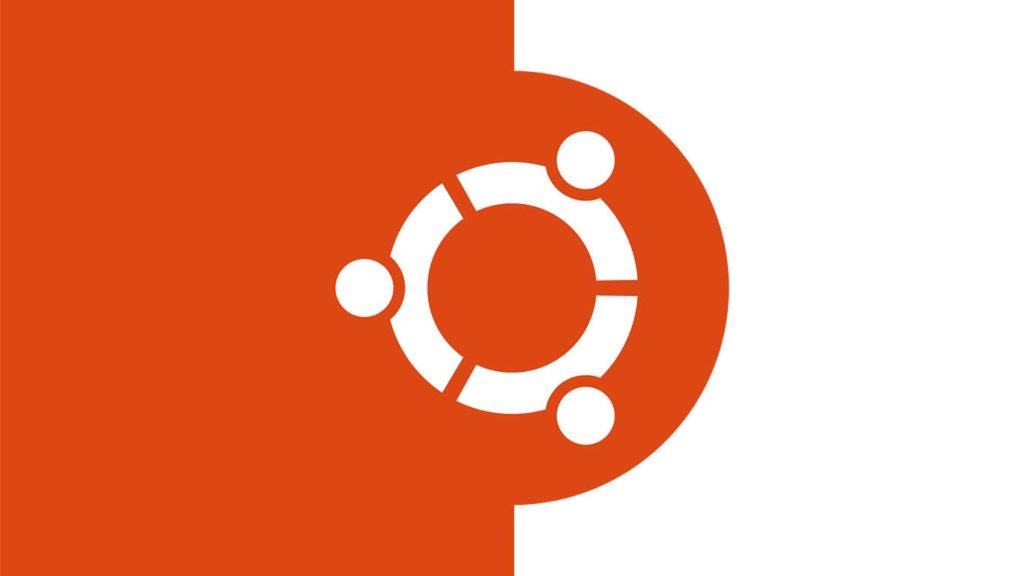
Ubuntu is a popular Linux-based OS available in three editions: desktop, server, and Core. In 2004, Ubuntu was launched as a revolutionary Linux-based OS that was hardware-compatible, simple to use, and a suitable alternative to Windows. Ubuntu may be popular, but there are advantages to using a different Linux distribution. For example, the Ubuntu user interface may be difficult to understand, or you might want to modify it more than Unity permits.
How to pick an alternative for Ubuntu?
Picking an alternative to Ubuntu can be a challenge if you have never been exposed to other Linux distros at all. As an open-source platform, Ubuntu has very distinct advantages over other distros. However, it is equally vulnerable when it comes to other aspects, which is what we will point out in the following list.
If you are looking for a suitable replacement for Ubuntu, then keep your eyes open for the following:
- The very first thing you should ascertain is hardware compatibility. Linux’s distros are known for having specific hardware requirements, so what worked for Ubuntu might not work for something like Fedora OS.
- Also, check whether the alternative can run the software you want or have been using on Ubuntu.
- It is also widely accepted that Ubuntu is the most user-friendly Linux distro out there, although I personally prefer Mint, so switching to a distro that can hamper your experience might not be a sound decision.
- Community support also plays a huge role in the usability of any Linux distro. If an alternative is more inclined towards a niche, then it might be tough for you to get familiar with it.
- Security is another aspect to consider when switching to an alternative.
Best Ubuntu Alternatives
Also, if Ubuntu is too slow on your computer, another distribution can be the right answer to all the system requirements. Some contemporary versions include Mac-style user interfaces if you like a familiar appearance. While there are hundreds of Linux variants, here are the 12 Best Ubuntu Alternatives.
1. Linux Mint
Linux Mint is one of the most popular Ubuntu Alternatives and offers many features that make it a great choice for users looking for an alternative to Ubuntu. It comes with its own Cinnamon Desktop Environment, which provides a user-friendly interface and plenty of customization options.
It offers a Mac-style user interface if you want something familiar, but it also lets you install MATE or KDE. Mint is widely considered one of the best Ubuntu alternatives and has an amazing community, so bugs and problems are quickly resolved, and help is readily available.
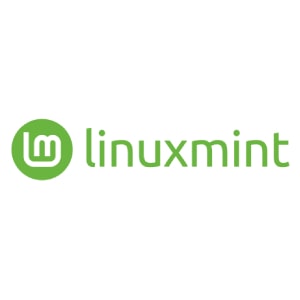
Linux Mint features
- User-friendly with an intuitive interface.
- Software Manager for easy installation of applications.
- Automated updates through Update Manager.
- Robust community and forum support.
- Excellent hardware compatibility.
- Pre-installed multimedia codecs.
2. Peppermint OS
Another Linux distribution based on Ubuntu long-term Support is Peppermint OS. It’s just a coincidence that it shares the name Mint with Linux Mint. Peppermint is compatible with both modern and older computers. It includes a blend of the XFCE and LXDE desktop environments. You get a Linux distribution that performs well and has all the functionality of a current operating system.
The cloud and the desktop are well blended in Peppermint OS. However, Peppermint’s greatest asset is its capacity to convert online applications such as Facebook, Gmail, and other websites into a Desktop Application. It’s simple to set up because it employs the Ubuntu installer and includes all you need to get started.
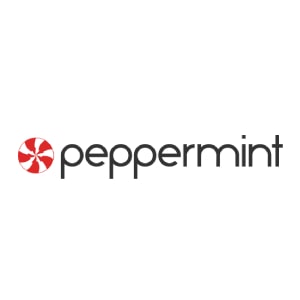
Peppermint OS features
- Lightweight and fast, suitable for older PCs.
- Integration of web apps into the desktop environment.
- Based on Ubuntu’s LTS (Long Term Support) releases.
- Hybrid LXDE/Xfce desktop environment.
- Ice application to create site-specific browsers.
- Stable and secure with regular updates.
3. Zorin OS
Like many other Linux distributions, Zorin OS is based on Ubuntu LTS. That means you get all of Ubuntu’s best features with a unique aesthetic and feel. The GNOME desktop has been customized for Zorin. This provides a nice balance between the Unity desktop’s contemporary aspects and the Linux Mint Cinnamon desktop’s conventional characteristics.
With a built-in Zorin look changer, you may modify many desktop characteristics. Zorin includes everything a normal individual wants, including a non-branded Chrome browser (Chromium), GIMP image editor, LibreOffice office suite, Rhythmbox music player, and PlayOnLinux with WINE.
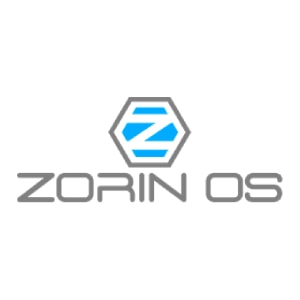
Zorin OS features
- Designed to be easy for Windows users to get accustomed to.
- Comes with a range of pre-installed software.
- Zorin Appearance app allows interface customization.
- Built on an Ubuntu base, providing stability and compatibility.
- Provides proprietary software support (drivers).
- Seamless transition between different desktop layouts.
4. Fedora
Fedora and Ubuntu have been the most popular Linux distributions on PCs for a long time. However, Fedora altered its course, moving toward a more business-oriented approach. That doesn’t imply that Fedora isn’t still a great desktop OS; you can get up and running with it just as quickly as the most recent Ubuntu release.
Fedora is a testbed for Red Hat Enterprise Linux’s most innovative features, which are often first seen on Fedora before being released to RHEL or CentOS. When Red Hat releases a new feature, it does so years before other open-source distributions. Fedora updates quickly, with new versions coming out every six months.
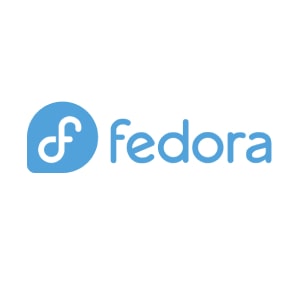
Fedora features
- Cutting-edge software due to frequent updates.
- Strong emphasis on free software.
- Backed by Red Hat, ensuring high-quality development and support.
- Features GNOME Desktop Environment by default but supports others too.
- Great for developers with built-in tools.
- Good security measures.
5. openSUSE
The oldest version of openSUSE is SUSE Linux Enterprise Server 11, released in 2006. There are two versions of openSUSE: Tumbleweed and Leap. Tumbleweed is a rolling release distribution, which means that you’ll never have to install another version after installation, just like Windows 10.
Like other versions, openSUSE Leap follows the standard downloading and installing the most recent version when published. A new release is rolled out every six months or so. openSUSE isn’t affiliated with Debian or Ubuntu, and its package manager is more comparable to Red Hat than to either of those systems. However, this isn’t a Red Hat distribution. It’s independent, and its primary selling point is stability.
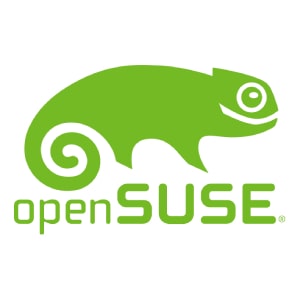
openSUSE features
- Available in two versions – Leap (Stable) & Tumbleweed (Rolling).
- YaST control center for system administration.
- Uses RPM package management.
- Excellent community support.
- Robust testing infrastructure ensures stable releases.
- OBS (Open Build Service) for packaging and distributing software.
6. Debian
Debian is another venerable Linux distribution that’s been around for a long time. Debian was one of the first distributions to really focus on providing a solid foundation for desktop users, and it sports an impressive number of packages in its repositories.
Unlike Ubuntu, which uses GNOME as its default desktop environment, Debian provides several options, including KDE Plasma, LXDE, XFCE, and MATE. As with openSUSE, Debian has two versions, namely, Stable and Testing (unstable). The Testing branch is more up-to-date than the Stable branch but less stable because it’s still developing.
Debian is perfect for server administrators who need to move quickly and don’t mind putting in the time required to manage their own systems.
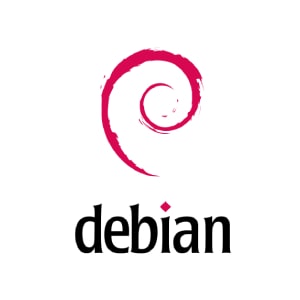
Debian features
- Extremely stable, used as a base for many other distributions.
- Huge repository of software packages.
- Supports a wide range of hardware architectures.
- Emphasizes free software, though does contain non-free repositories.
- Active community support.
- Known for its rigorous testing and slow release cycle.
7. Red Hat Enterprise Linux (RHEL)
RHEL, or Red Hat Enterprise Linux, was initially created by the Red Hat Corp. and was called Red Hat Advanced Server, or RHAS. The project started back in the year 2003, and it has since become a suitable replacement for Ubuntu.
RHEL is a much more advanced Linux distro as there are features that make it more versatile. Take security for example. Updating a security patch has never been easy on an older version of the OS as it utilizes yum updates. Also, vendors across the globe promote RHEL.
Another advantage is the ease of maintenance and third-party compatibility. But those who love a great GUI would find it to be a bit lacking. Another issue is the constant failure of the system.
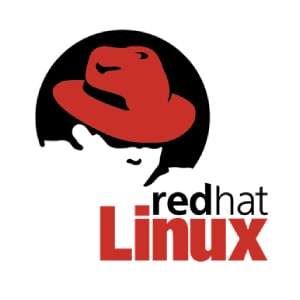
Red Hat Enterprise Linux (RHEL) features
- Strong support and lengthy maintenance periods.
- Certified by multiple hardware and software vendors.
- Built with enterprise, server, and corporate environments in mind.
- Subscription model guarantees regular updates and security patches.
- Utilizes SELinux for additional security.
- Offers various tools for system administration.
8. Solus
Solus is one of many new entries into this list that offer an independent experience based on package management through its EOPKG system rather than using tools like APT or YUM used by other distributions such as Debian, Fedora, openSUSE and others.
It uses the GNOME desktop environment but with some tweaks, including a more Mac OS X style dock at the bottom of the screen called “Budgie.” Budgie can also be used on other distributions but Solus’s default desktop environment.
Solus is a young distribution and is still in development, with new releases occurring about every six months. As a result, it isn’t as polished as some others on this list, but it has potential and is worth keeping an eye on.

Solus features
- Independent (not based on any other distribution).
- Designed for home computing use.
- Uses the Budgie desktop environment and also supports GNOME & MATE.
- Stable release cycle using a curated rolling release model.
- Own package management system – eopkg.
- Pre-installed applications to cover everyday needs.
9. Mageia
Mageia is a community-driven Linux distribution that was forked from Mandriva , a now-defunct Linux distribution. It uses the RPM package management system and provides several desktop environments, including KDE Plasma, GNOME, Xfce, LXDE, MATE, Cinnamon and Razor-QT.
Some versions use just one desktop environment or provide a choice at installation time. Mageia is a stable distribution that’s been around for a while and has a large user community. It’s based on Mandriva, so it should be familiar to users of that distribution.

Mageia features
- Community-driven project, forked from Mandriva.
- Uses RPM package management.
- Offers a wide range of desktop environments.
- Easy-to-use system configuration tools.
- Stable due to thorough testing.
- Committed to providing free software.
10. CrunchBang
Now known as CrunchBangPlusPlus, this operating system is based on Debian 11 and Ubuntu. It uses OpenBox as the window manager, making it really lightweight while still being functional and beautiful.
Best of all, you don’t have to worry about getting a new computer to use this OS since it will work with your old one too. While most users seem to recommend using XFCE instead of Openbox for better performance, you won’t be disappointed with Crunchbang even on your older machine.
However, there are some issues with handling Flash content on websites, which is annoying if you like to use YouTube or Netflix. Nevertheless, this is a great Ubuntu alternative if you can get around that. Best of all, it’s free to download.
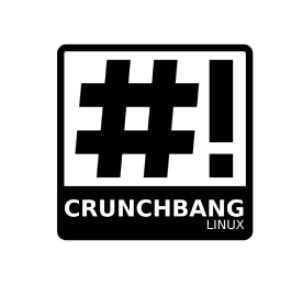
CrunchBang features
- Lightweight, based on Debian.
- Uses the Openbox window manager, suitable for older hardware.
- Minimalistic aesthetic design.
- Low resource requirements.
- Well suited for programming and scripting purposes.
- Stable because it’s derived from Debian.
11. Artix Linux
Artix is based on the Arch Linux distro and uses OpenRC, runit, suite66, or init in place of systemd. While it is possible to utilize packages from other distros, or even those repositories that solely depend on systemd, most users feel confident in the Artix archetype as it utilizes the pacman-based distribution.
Furthermore, AUR, the Arch User Repository can also be used if needed. As we already know, Artix relies heavily on the early Arch OpenRC that was built around 2012 and the Manjaro OpenRC. Artix is basically the merger of these two previous distros.
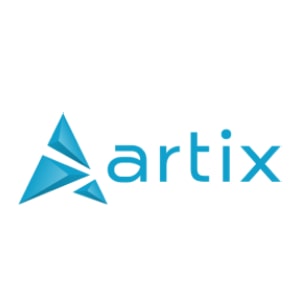
Artix features
- Based on Arch but uses different init systems (OpenRC, runit or s6) instead of systemd.
- Provides a clean, simple and lightweight base structure.
- Rolling release model, keeping software current.
- Supports multiple desktop environments/window managers.
- High degree of user control and customization.
- Access to the AUR (Arch User Repository).
12. Manjaro
This distro is based on Arch Linux, and it’s one of the newer entries into the Ubuntu alternatives field. It has a really slick interface, and it’s been designed with user-friendliness in mind. It comes with its own software manager, which makes installing new applications really easy, and it also includes some useful features like automatic updates for your system.
However, you may find that Manjaro can be a bit resource-intensive compared to other options on this list, so keep that in mind if you’re using an older machine.
Nevertheless, Manjaro is a user-friendly Linux distribution packed with all the essential applications. Manjaro is also very stable yet incredibly quick and efficient. So this is an appealing alternative to Ubuntu that isn’t built on Ubuntu.
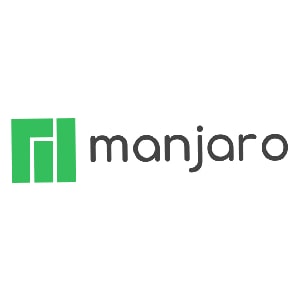
Manjaro features
- Uses a rolling release model, getting the latest software swiftly.
- User-friendly, based on Arch Linux but easier to install and use.
- Access to the AUR (Arch User Repository).
- Comes with several pre-installed desktop environments.
- Drivers are automatically installed which is useful for newer users.
- Stable due to additional testing of updates.
What do we recommend as an Ubuntu alternative?
We recommend Linux Mint as an alternative to Ubuntu, which is no surprise, as the distro is perfectly capable of doing anything Ubuntu could, and that with style. The UI is not only great but offers so much in terms of customization. If you are a Mac lover, then you can appreciate the charm of Mint.
However, you can also go with Peppermint OS, which is yet another good choice as an alternative. But its greatest strength lies in the Ubuntu Installer.
But if you are looking for something that is inherently not based on Ubuntu, then you might want to check out either RHEL or Debian. While the former is an excellent choice for those looking for beefier security, the latter offers a different flavor altogether.